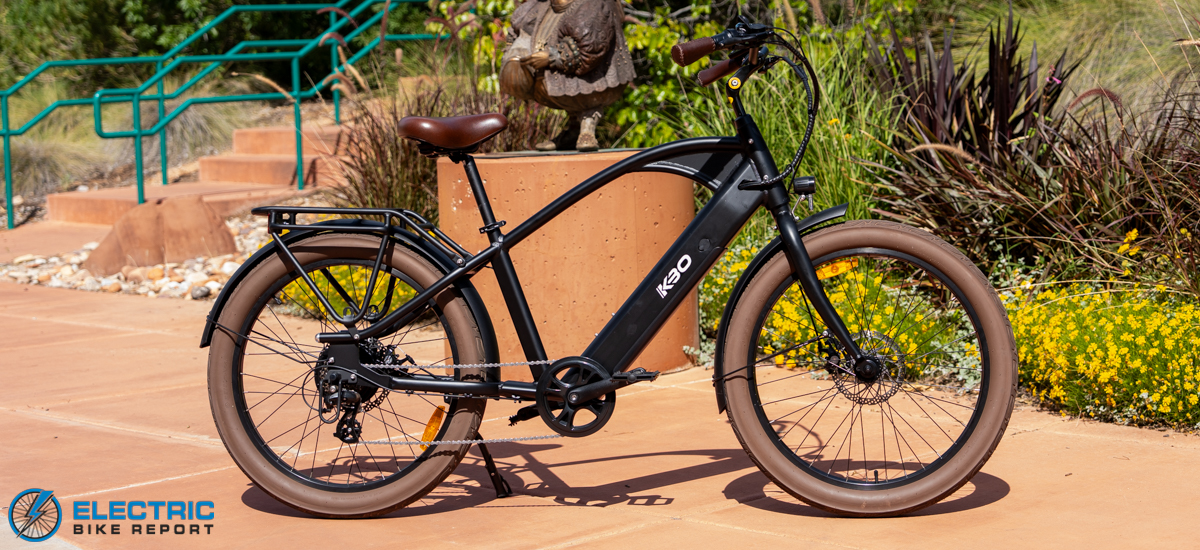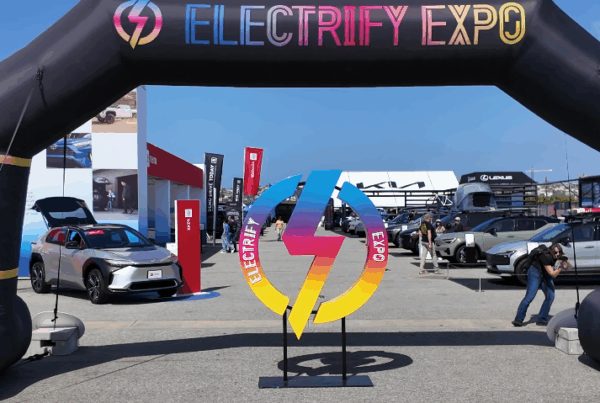

With so much of our prior focus being on the Oasis’ ability to power forward, it’s fitting now to talk about how well this bike stops. The Oasis’ brake system performed better than expected on our brake test, with an average stopping distance of 23’3”. For most e-bikes the average is 20’ – 22’, but for cruisers and commuter e-bikes, the Oasis landed close to the middle. That’s not bad considering these brakes are mechanical instead of hydraulic.
The Oasis uses brakes we haven’t seen before – Teboka MD 320 mechanical disc brake system. It uses 180mm rotors on the front, which is what we see on many other e-bikes, and 203mm rotors on the rear wheel. We were a little surprised by this because we don’t normally see an e-bike with different size rotors.
Taking a deeper look at this, there are a few reasons that support KBO’s choice. Using the bigger rotor means you don’t lose as much braking power because the larger 203mm rotor generates less heat than the 180mm rotor. Bigger rotors also stop better because their braking torque is closer to the outside part of the wheel. The physics around this are too advanced to explain here but it does support having the larger rotor on the rear. And since the hub motor is on the rear wheel, it generates additional heat that’s not present on the front brake rotor.
Hydraulic brakes tend to work better than mechanical brakes, so it stands to reason that using a larger rotor than normal makes these Teboka brakes work better. And looking at this further, with some subjectivity involved, another reason for the 203mm on the rear is that most riders use the rear brake more than the front brake.
There are a lot of articles out there that claim riders tend to use their rear brake more, but I can tell you in my years of working at a bike shop, many riders have told me they were taught to not use the front brake as much because of the risk of going over the handlebar.
Putting aside that last assumption, KBO’s choice on the rear rotor was a safer bet. The Teboka brakes are not well-known, so we don’t have experience with these brakes on other bikes. The fact that this bike stopped well on our test, and uses a larger-than-average rotor, gave us a little more confidence in using these unfamiliar brakes.
Our only other issue is that the brakes are still squeaking. Sometimes we get new bikes with squeaky brakes, which usually come from a coating on the brake pads that wears off after your first couple of rides. This may be an aberration. Sometimes glazing develops, in which case our mechanic will have to remove the pads, lightly sand them down, and then re-install. But if you’re not a bike mechanic, that means put up with the squeaks, or pay a bike mechanic to get rid of the squeak.
.
.
.
#KBO #Oasis #EBike #Review #Electric #Bike #Report
Source link








